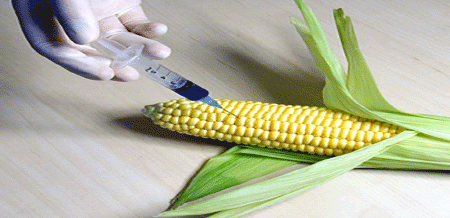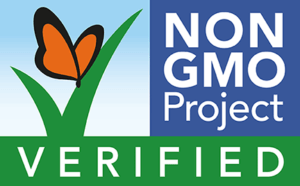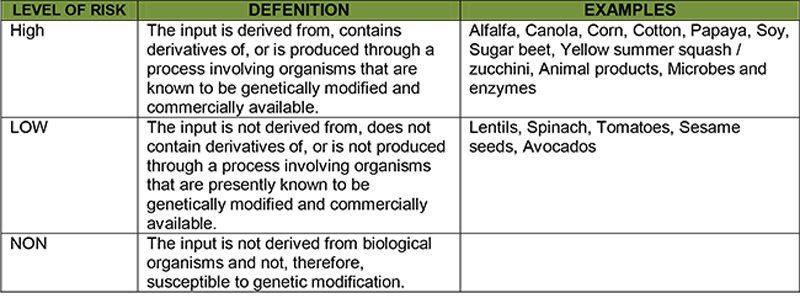GMO – What is it?
- By J.Maxine MacGwyre, LMA, Nutrition Specialist
- •
- 16 May, 2019
- •

What is GMO?
A GMO (genetically modified organism) is defined as a plant, animal, microorganism or other organism whose genetic makeup has been modified using “gene splicing” also known as recombinant DNA methods, gene modification or transgenic technology.
How long have GMOs been around?
Research and development of GMOs have been going on for more than 30 years…starting with a little ole tomato in 1994 which was the first genetically modified food designed and approved for human consumption. Things got rocking in 1996 when GE Crops launched the firstwide scale planting of GMOs.
Are GMOs safe?
33 nations do not consider GMOs to be safe and have significant restrictions or outright bans on both the production and sale of GMOs. However the U.S. and Canadian governments, have approved GMOs…and this is where it gets interesting…based on studies conducted by the very same corporations that created them and profit from their sale. True scientific study involves the use of third party testing and verification.
So what’s the big deal?
This relatively new science creates unstable combinations of plant, animal, bacterial and viral genes that do not occur in nature or through old school crossbreeding methods. Thus we are now consuming foods on a daily basis that are potentially unrecognizable to the human body.


So here is the “so what”?
The enzymes in our bodies designed to digest the food we eat work along the same lines as a lock and key; each enzyme is very specific as to what it is designed to digest. These enzymes have not changed for hundreds and hundreds of years, so when we eat GMO foods are body does not entirely recognize what we have eaten leading to improper digestion and usage of what is supposed to be providing nutrition to our bodies. Along with not being able to utilize the nutrition to the fullest, improper or incomplete digestion can lead to inflammation which is now realized to be the root of many disease processes including problems in the skin often showing up as Rosacea, sensitivity and acne.
Who is looking out for our best interest?
As the number of GMOs available for commercial use grows every year, the Non-GMO Project works diligently to provide the most accurate, up-to-date standards for non-GMO verification. In order for a product to be Non-GMO Project Verified, its inputs must be evaluated for compliance with established standards and are then categorized into three risk levels:

These high-risk ingredients are typically present in packaged products as:
Amino acids, alcohol, aspartame, ascorbic acid, sodium ascorbate, citric acid, sodium citrate, ethanol, flavorings (“natural” and “artificial”), high-fructose corn syrup, hydrolyzed vegetable protein, lactic acid, maltodextrins, molasses, monosodium glutamate (MSG), sucrose, textured vegetable protein (TVP), xanthan gum, vitamins, vinegar, and yeast products.
Even though there are only several major GM crops that are widely available for purchase by consumers in their “natural” state, they become harder to track as they are commodity crops that are further processed into a variety of ingredients which in turn are used in processed foods. Most packaged foods contain ingredients derived from corn, soy, canola, and sugar beet; the vast majority of those crops grown in North America are genetically modified.
The Non-GMO Project Standard considers animal-derived products such as meat, dairy, eggs and honey to be high risk due to the prevalence of GMOs in animal feed. Cloned animals and their young are considered to be GMOs under the standard, as are the products of synthetic biology.
Are GMOs labeled?
64 countries around the world, including Australia, Japan, and all of the countries in the European Union, require genetically modified foods to be labelled. According to a 2015 ABC News survey, 93% of Americans would like genetically modified foods to be labelled, GMOs however are not required to be labelled in the U.S. and Canada. Mad yet? In the absence of mandatory labeling, the Non-GMO Project was created to give consumers the informed choice they deserve.
How do GMOs affect farmers?
Because GMOs are patented life forms with associated restricted use, biotechnology companies that make GMOs now have the power to sue farmers whose fields are contaminated with GMOs, even when it is the result of inevitable drift from neighboring fields using other GMOs. GMOs therefore pose a serious threat to farmer sovereignty and to the national food security of any country where they are grown, including the United States and Canada.
What are the impacts of GMOs on the environment?
More than 80% of all GMOs grown worldwide are engineered for herbicide tolerance. As a result, use of toxic herbicides like Roundup has increased 16 times since GMOs were introduced. GM crops are also responsible for the emergence of herbicide resistant “super weeds” and “super bugs,” which can only be killed with more toxic poisons like 2,4-D (a major ingredient in Agent Orange). GMOs are a direct extension of chemical agriculture and are developed and sold by the world’s biggest chemical companies. The long-term impacts of GMOs are unknown, and once released into the environment, these novel organisms cannot be recalled.
Is Organic and Non-GMO the same thing?
Products with an organic certification are grown without the use of pesticides, synthetic fertilizers, sewage sludge, GMOs, or ionizing radiation. Animals that produce meat, poultry, eggs, and dairy products do not take antibiotics or growth hormones.
USDA certified organic products cannot intentionally contain GMOs. So there you have it. A non-GMO label is only certifying that a product does not contain GMOs. An organic certification provides much more, including a certification that the product doesn’t contain GMOs. Both certifications leave a bit of wiggle room for unintentional GMO contamination.
The Bottom Line…
Reading food labels has become more important than even. Look for the Non-GMO Verified label as another resource when shopping for cereals, snacks and other foods though it is best to purchase minimally processed foods and better yet, foods as close to their natural state as possible. Buy organic food whenever you can. A new study found substantially higher levels of antioxidants and by definition, lower levels of pesticides in organic fruits, vegetables and grains compared with those grown conventionally.
SOURCES
Center for Food Safety | Issues | GE Food Labeling | International Labeling Laws. Center for Food Safety. N.p., n.d.
Langer, Gary. “Poll: Skepticism of Genetically Modified Foods.” ABC News. ABC News Network, 19 June 2015.
Fernandez-Cornejo, Jorge, and Seth James Wechsler. “USDA ERS – Adoption of Genetically Engineered Crops in the U.S.: Recent Trends in GE Adoption.” USDA ERS – Adoption of Genetically Engineered Crops in the U.S.: Recent Trends in GE Adoption. United States Department of Agriculture, Economic Research Service, 09 July 2015.
Leader, Jessica. “Monsanto Wins Lawsuit Filed By U.S. Organic Farmers Worried About Seed Contamination.” The Huffington Post. TheHuffingtonPost.com, 10 June 2013.
Duke, S.O., & Powles, S.B. (2009). “Glyphosate-resistant crops and weeds: Now and in the future.” AgBioForum, 12(3&4), 346-357.
Kustin, Mary Ellen. “Glyphosate Is Spreading Like a Cancer Across the U.S.” EWG. Environmental Working Group, 07 Apr. 2015.
Mortensen DA, Egan JF, Maxwell BD, Ryan MR, Smith RG. “Navigating a critical juncture for sustainable weed management.” BioScience. 2012;62(1):75-84.
“Newsroom.” Agent Orange: Background on Monsanto’s Involvement. N.p., n.d.




